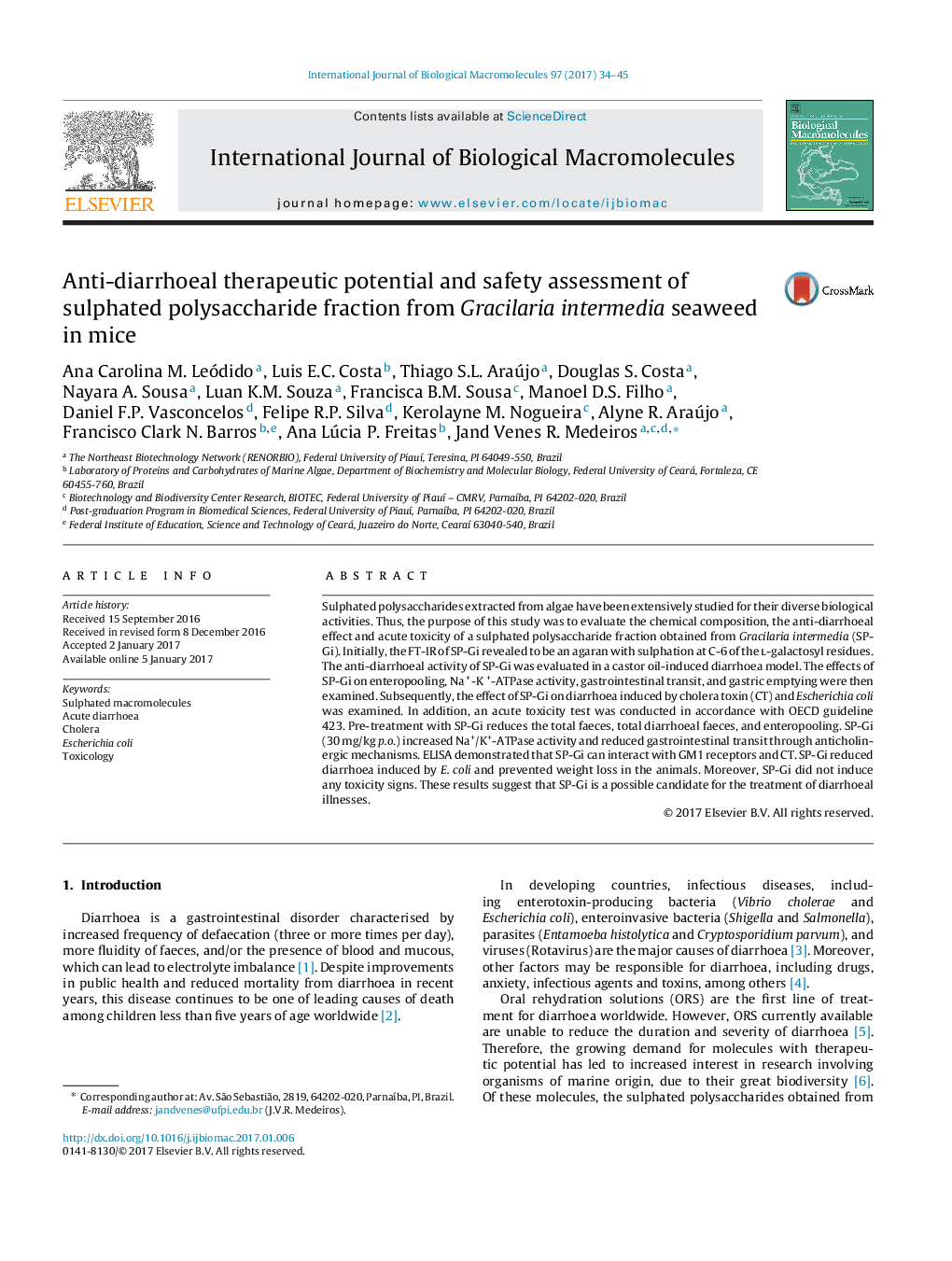| Article ID | Journal | Published Year | Pages | File Type |
|---|---|---|---|---|
| 5512574 | International Journal of Biological Macromolecules | 2017 | 12 Pages |
â¢SP-Gi can interact with GM1 receptors and cholera toxin decreasing diarrhoea.â¢SP-Gi reduced diarrhoea induced by E. coli and prevented weight loss.â¢SP-Gi did not induce any toxicity signs in mice.â¢SP-Gi is a possible candidate for the treatment of diarrhoeal illnesses.
Sulphated polysaccharides extracted from algae have been extensively studied for their diverse biological activities. Thus, the purpose of this study was to evaluate the chemical composition, the anti-diarrhoeal effect and acute toxicity of a sulphated polysaccharide fraction obtained from Gracilaria intermedia (SP-Gi). Initially, the FT-IR of SP-Gi revealed to be an agaran with sulphation at C-6 of the l-galactosyl residues. The anti-diarrhoeal activity of SP-Gi was evaluated in a castor oil-induced diarrhoea model. The effects of SP-Gi on enteropooling, Na +-K +-ATPase activity, gastrointestinal transit, and gastric emptying were then examined. Subsequently, the effect of SP-Gi on diarrhoea induced by cholera toxin (CT) and Escherichia coli was examined. In addition, an acute toxicity test was conducted in accordance with OECD guideline 423. Pre-treatment with SP-Gi reduces the total faeces, total diarrhoeal faeces, and enteropooling. SP-Gi (30Â mg/kg p.o.) increased Na+/K+-ATPase activity and reduced gastrointestinal transit through anticholinergic mechanisms. ELISA demonstrated that SP-Gi can interact with GM1 receptors and CT. SP-Gi reduced diarrhoea induced by E. coli and prevented weight loss in the animals. Moreover, SP-Gi did not induce any toxicity signs. These results suggest that SP-Gi is a possible candidate for the treatment of diarrhoeal illnesses.
